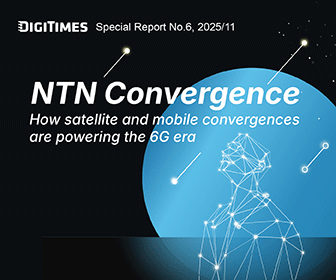While infrared (IR) LED devices are necessary for the sensing functions of many AR/VR devices, micro LED has large potential of becoming a candidate display technology for immersive Metaverse applications.
Currently, the Metaverse is a hot topic, and the applications of AR/VR devices seem to be increasing, according to chairman Robert Yeh for the largest Taiwan-based LED packaging service provider Everlight Electronics. Increasing numbers of clients are entering talks with Everlight about adopting IR LED-based transmitting and receiving devices for AR/VR devices, Yeh said. Everlight can cooperate with Si-based sensor chip makers Tyntek and Taiwan Asia Semiconductor (formerly Opto Tech) to become a Taiwan-based AR/VR supply chain.
US-based smart glasses vendor Vuzix is developing AR glasses that use in-house-developed waveguide technology and optical components in display engines to reflect images onto pieces of glass. Vuzix is also developing monochrome micro LED display glasses produced by China-based Jade Bird Display; these glasses are 30% lower in weight than most existing AR glasses.
China-based Xiaomi recently unveiled an exploratory smart glasses model featuring micro LED-based optical waveguide imaging technology and a 2.4 x 2.02mm display driver IC. An OLED panel would be impractical for such glasses, but use of a monochrome micro LED panel results in higher pixel density, a longer service life, and smaller dimensions, Xiaomi noted.
Taiwan-based PlayNitride has developed a 0.39-inch monochrome micro LED display specifically for use in AR devices as well as a panchromatic micro LED display with 1,411 PPI (pixels per inch) (480x270 pixels). There are 5-6 potential clients interested in adopting the panchromatic model, and PlayNitride plans to begin design-in-process in 2022, the company indicated.
Currently, optical waveguides are a mainstream technology used in many AR devices, including the Microsoft-developed HoloLens and the Magic Leap-developed Magic Leap 1. However, a typical optical waveguide loses over 99% of its light and therefore, ultralight displays are required for 0.2- to 0.5-inch screens to reach the FHD (full high definition) level. Currently, small-size OLED panels or LCoS (liquid crystal on silicon) technology may not meet the requirements for ultralight displays. For example, the brightness of an OLED panel is about 100,000nits, far short of the required 500,000-1,000,000nits.
In terms of production costs, monochrome micro LEDs can be competitive with small-size OLED panels and LCoS products, but the former are mainly used for industrial and medical purposes and are not suitable for immersion-based consumer AR devices. Therefore, as soon as panchromatic micro LED technology is mature, it may become a mainstream display technology for immersion-based AR/VR devices and Metaverse applications.




